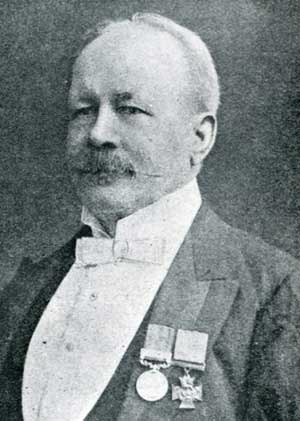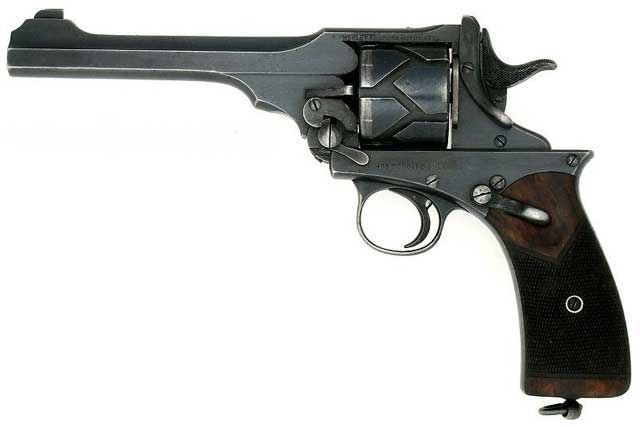Every once in a while an inventive mind focuses on a problem, and wham!, something completely new appears. This happened when an old retired veteran from the Indian Frontier turned his thoughts towards improving the British service revolver.
George Vincent Fosbery entered the Bengal Army in 1852 and quickly rose in the ranks till he became Lieutenant-Colonel in 1876. In the 1860's he participated in several Northwest Frontier battles, particularly around a fortified mountaintop outpost called Crag Picquet which had earned him a Victoria Cross. A gritty battle with the Pashtuns, after the loss of the Crag, he was the first man back up the mountain and into the fray. Besides his military accomplishments, and the Webley-Fosbery, he also developed the Paradox Gun, and an explosive rangefinding bullet.

The need for a fast handling gun was not lost on George Fosbery. In fact, during his early military career, the standard British Army handgun, if there was such a thing at that time, was the muzzle loading Adams revolver. By the time Fosbery retired, handguns had come a long way. The Webley break open service revolver had advanced to a high degree of perfection, and when used with the Prideaux Instantaneous Loader, a faster handling gun couldn't be imagined. But when compared with automatics of the day, the revolver did have one glaring problem. The double action trigger pull was heavier than a single action pull of the trigger, or the pull of an automatic arm. reducing accuracy.
George figured out what he wanted and got Webley to develop it. The basic parts of the gun are based on the sturdy Webley Government Mk VI, including the same break open action, and still able to use the quick loader. The top half of the gun is then let onto a recoiling frame that includes the trigger group, to cock the gun and advance the cylinder on the recoil principle. A stud in the bottom of the frame engages the unique zigzag tracks in the cylinder to turn it to the next chamber.

Webley-Fosbery from Adam's Guns
When the gun is fired, the upper body recoils 7/8" on the recoiling frame, advancing the cylinder half way to the next chamber, and cocking the hammer. When the upper body returns to battery, the cylinder turns the next half turn to line up the next chamber. A spring loaded stud on the upper body engages the cylinder when the gun is open, in order to reload, and this keeps the cylinder lined up to the bottom stud when closed, and you are back in action. The advantage is a single action light trigger pull for each shot. If the gun misfires, you pull the upper body to the rear, much like cocking an automatic pistol, to bring it around to the next shot.
The first gun was chambered for .455 with six shots, and was extensively used in WW1, some being issued to the Air Service. An 8 shot .38 model was added, with some thoughts to a .32 model which never came to light. The Automatic Revolver was also chambered in .45 ACP for the big tests in America for a service pistol to replace the anemic .38 revolver they were using, but lost out to Browning's model 1911. The 1911 Colt is a pretty good gun, but you would still be well armed with a Webley-Fosbery.

